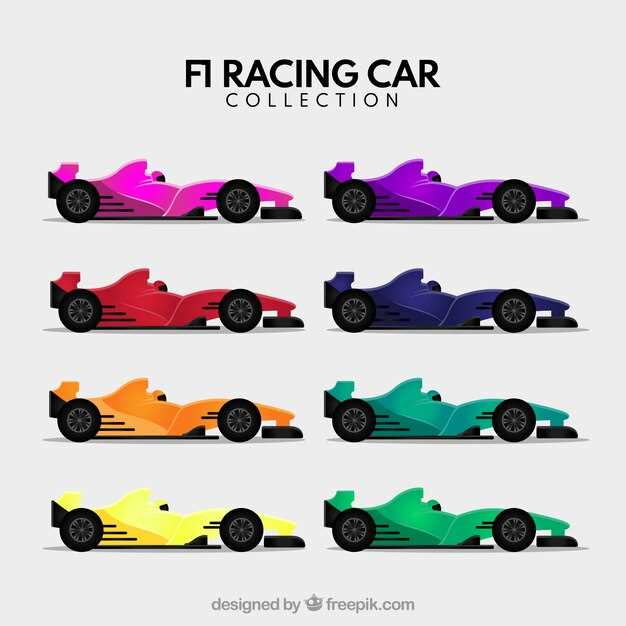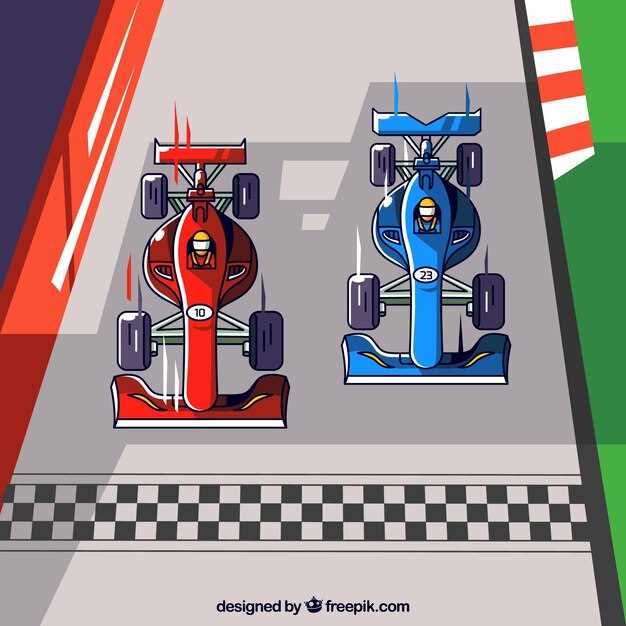
In the world of motorsports, few events capture the thrill and intensity of drag racing. At the heart of this exhilarating competition lie the dragsters, purpose-built machines engineered for one thing: speed. These racing beasts represent the pinnacle of automotive technology, combining raw power, aerodynamic design, and cutting-edge engineering to achieve unmatched performance on the strip.
The allure of drag racing stems from the adrenaline rush experienced during a brief, high-speed showdown. Each race is a battle against time, where fractions of a second can determine the winner. The dragster itself plays a crucial role, with its powerful engines capable of producing over 10,000 horsepower. This staggering output allows these vehicles to accelerate from 0 to 60 mph in less than a second, showcasing the sheer force behind their design.
Every aspect of a dragster’s design is meticulously crafted to optimize performance. From the lightweight chassis to the specialized tires, every detail is focused on achieving speed and stability. The combination of engineering prowess and innovative materials has led to breakthroughs that continually push the boundaries of what is possible in the world of drag racing.
Drag Racing Cars: Power, Design, and Speed Unleashed

Drag racing cars are a testament to the pinnacle of automotive engineering, combining raw power, innovative design, and the pursuit of speed. These vehicles are meticulously constructed to achieve maximum acceleration over a short distance, typically a quarter-mile. The thrill of drag racing lies in the ability to unleash this power in mere seconds, and several key components contribute to their performance.
- Engine: The heart of every drag racing car is its engine. High horsepower engines, often supercharged or turbocharged, can produce upwards of 10,000 horsepower. These powerplants are designed for peak efficiency, providing the necessary thrust for rapid acceleration.
- Weight Reduction: Every component is carefully selected and engineered to minimize weight. Utilizing lightweight materials such as carbon fiber and aluminum aids in enhancing acceleration. The overall design prioritizes a low center of gravity, which improves stability during rapid launches.
- Tire Technology: Drag racing tires are specifically designed for optimal grip. These tires feature a unique rubber compound that maximizes traction, allowing cars to harness their power effectively. Wide tires increase surface area, enhancing acceleration from a standstill.
- Aerodynamics: The design of drag racing cars focuses not only on aesthetics but also on aerodynamic efficiency. Streamlined body shapes reduce air resistance, allowing vehicles to maintain high-speed trajectories without severe drag. Spoilers and wings are strategically placed to enhance downforce during acceleration.
In drag racing, every millisecond counts. The ability to translate engine power into acceleration makes the difference between victory and defeat. The thrill of watching these machines launch down the track, often reaching speeds exceeding 300 mph in mere seconds, underscores the technological marvels behind their design.
- Customization: Drag racers often customize their vehicles extensively. From tuning the engine to adjusting suspension settings, every modification aims to optimize performance.
- Safety Features: As speed increases, so does the need for safety. Modern drag racing cars are equipped with advanced safety systems, including roll cages and specialized harnesses, to protect drivers during high-speed runs.
- Performance Testing: Regular testing and tuning are essential. Data logging systems track acceleration, speed, and other metrics, allowing teams to make informed adjustments to improve performance.
Ultimately, drag racing cars are not just about speed; they represent the convergence of technology, design, and human skill. As engineers and drivers continue to push the limits, the evolution of drag racing cars will lead to even more exhilarating displays of power and acceleration.
Optimizing Engine Power for Maximum Acceleration in Dragsters

To achieve peak acceleration in drag racing, the engine’s power must be meticulously optimized. This process involves several key factors that contribute to the overall performance of the dragster. The primary objective is to maximize horsepower and torque, which directly influence the vehicle’s ability to accelerate rapidly off the starting line.
One crucial aspect of engine optimization is the selection of high-performance components. Upgrading to a larger displacement engine can significantly enhance power output. Additionally, implementing forced induction systems such as superchargers or turbochargers can provide a substantial boost in horsepower, allowing for quicker acceleration times.
Tuning the engine’s air-fuel mixture is equally important. Achieving the optimal ratio can enhance combustion efficiency, leading to increased power. Fine-tuning the ignition timing is also vital; incorrect timing can lead to power loss and sluggish acceleration. Advanced engine management systems enable precise adjustments, ensuring that the engine performs at its best during the crucial moments of a drag race.
Moreover, exhaust systems play a pivotal role in engine performance. A high-flow exhaust system reduces back pressure, facilitating improved exhaust flow and helping to harness additional power for acceleration. This, combined with lightweight racing components, can drastically enhance the dragster’s responsiveness.
The drivetrain cannot be overlooked when discussing acceleration. A high-performance transmission with quick shifting capabilities allows for better power delivery to the wheels. Additionally, optimizing gear ratios can help maintain peak engine performance throughout the race, preventing power loss during shifts.
Finally, proper weight distribution and overall vehicle balance are essential for maximizing acceleration. A well-optimized dragster can transfer power more effectively to the ground, allowing for improved traction and faster acceleration. By addressing these factors, teams can ensure their dragster is set up for maximum performance and acceleration on the track.
Aerodynamic Enhancements: Designing Dragsters for Speed and Stability
Aerodynamics play a crucial role in the design of drag racing cars, influencing both speed and stability during high-speed runs. The primary goal is to minimize air resistance while maximizing downforce to enhance acceleration and traction on the track.
One of the key features in aerodynamic design is the shape of the dragster’s body. A streamlined profile reduces drag by allowing air to flow smoothly over the vehicle. This design not only helps to achieve higher speeds but also improves the car’s stability at high velocities. The use of tapered shapes and integrated spoilers can further optimize airflow, creating a balance between lift and downforce.
Front and rear wings are essential components for maintaining stability. The front wing can help to create downforce, enhancing the front grip during acceleration, while the rear wing contributes to overall stability at high speeds. Optimal wing angles and adjustments are vital as they directly affect airflow and pressure around the car.
In addition, ground effect is utilized by designing the underbody of the dragster to create high-speed air channels. This technique generates additional downforce by increasing the airflow beneath the vehicle, allowing for better traction during acceleration. Coupled with a low ride height, this approach ensures that the car remains glued to the track, minimizing the chances of lift-off during runs.
Moreover, the integration of aerodynamic aids such as diffusers helps in managing airflow at the rear of the vehicle. Diffusers accelerate the air as it exits from underneath the car, reducing drag and creating a vacuum effect that improves downforce. This is particularly beneficial during acceleration phases, where maintaining optimal tire contact with the surface is crucial for performance.
In conclusion, aerodynamic enhancements are fundamental in the design of dragsters aimed at achieving maximum acceleration and enhancing stability. Through careful shaping, the strategic use of wings, and the application of ground effects, engineers can develop drag racing cars that not only accelerate faster but also remain stable at high speeds, providing drivers with the confidence needed for competitive racing.
Tire Selection and Suspension Setup for Top Performance in Drag Racing
Tire selection is crucial to achieving maximum acceleration in drag racing. Tires designed specifically for drag racing, such as slicks, provide optimal grip on the track. These tires feature a larger contact patch and a softer compound, enabling them to effectively transfer horsepower to the ground during launch. The selection of tire size also plays a significant role; larger diameter tires can enhance acceleration by reducing engine RPM at high speeds, while smaller tires can improve traction during the initial stages of the race.
In addition to tire choice, the suspension setup greatly impacts a car’s performance. A proper suspension system allows for weight transfer to the rear tires during acceleration, increasing traction. Adjustable components, such as shock absorbers, springs, and anti-roll bars, enable racers to fine-tune their setup for optimal performance. Setting the right preload and damping settings helps maintain stability, especially under hard launches that see rapid changes in weight distribution.
An essential aspect of suspension tuning in drag racing is the ability to manage the car’s rear ride height. Lowering the rear increases the amount of weight over the rear tires, maximizing grip. Conversely, adjusting the front suspension can help with weight transfer and control during acceleration. A well-balanced setup allows the car to maintain traction without excessive wheel spin, which can hinder acceleration and result in slower times.
Ultimately, the combination of appropriate tire selection and a meticulously tuned suspension setup is vital for achieving top performance in drag racing. By optimizing these elements, racers can unleash their vehicles’ full potential on the track, leading to faster times and better overall results.











